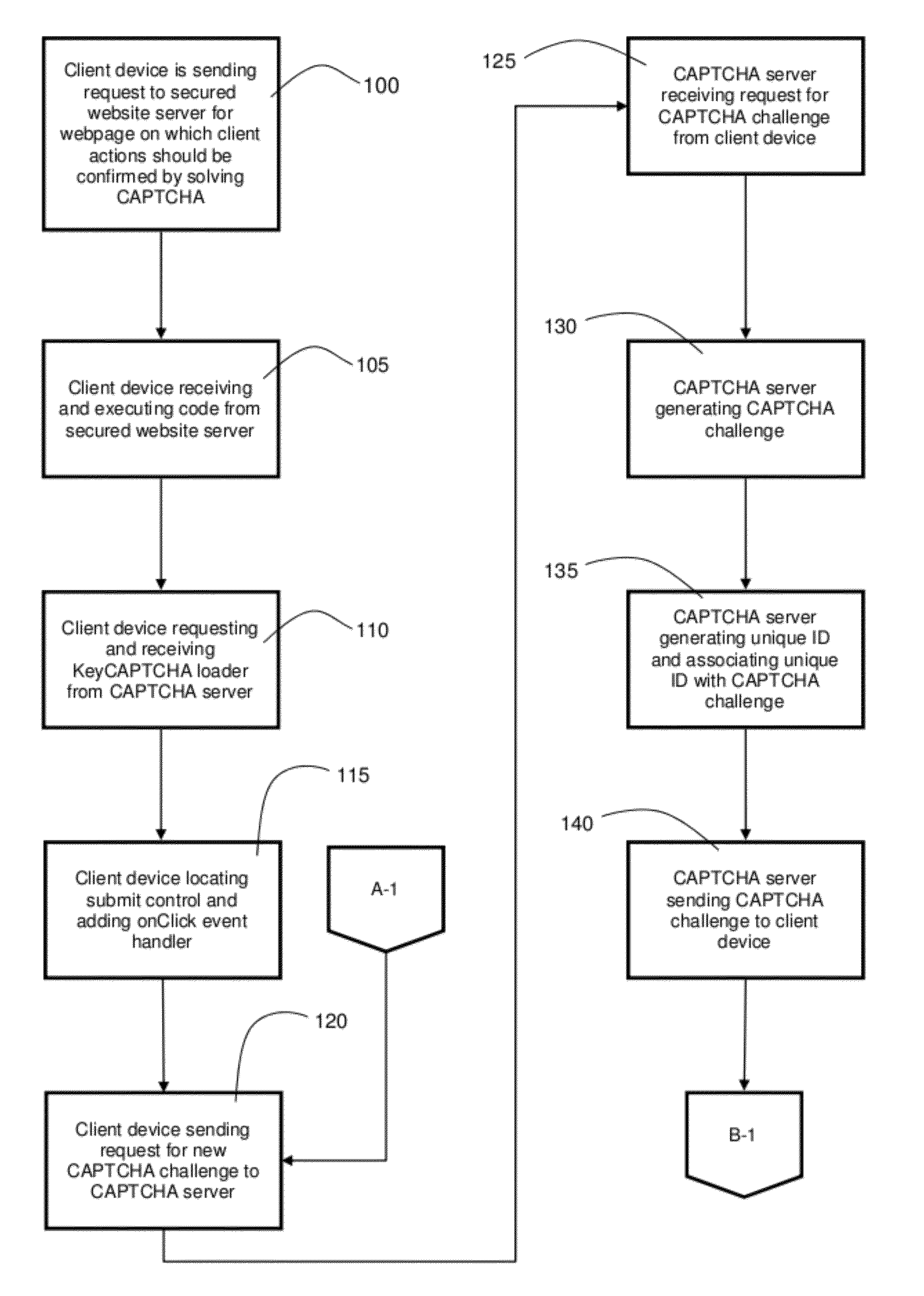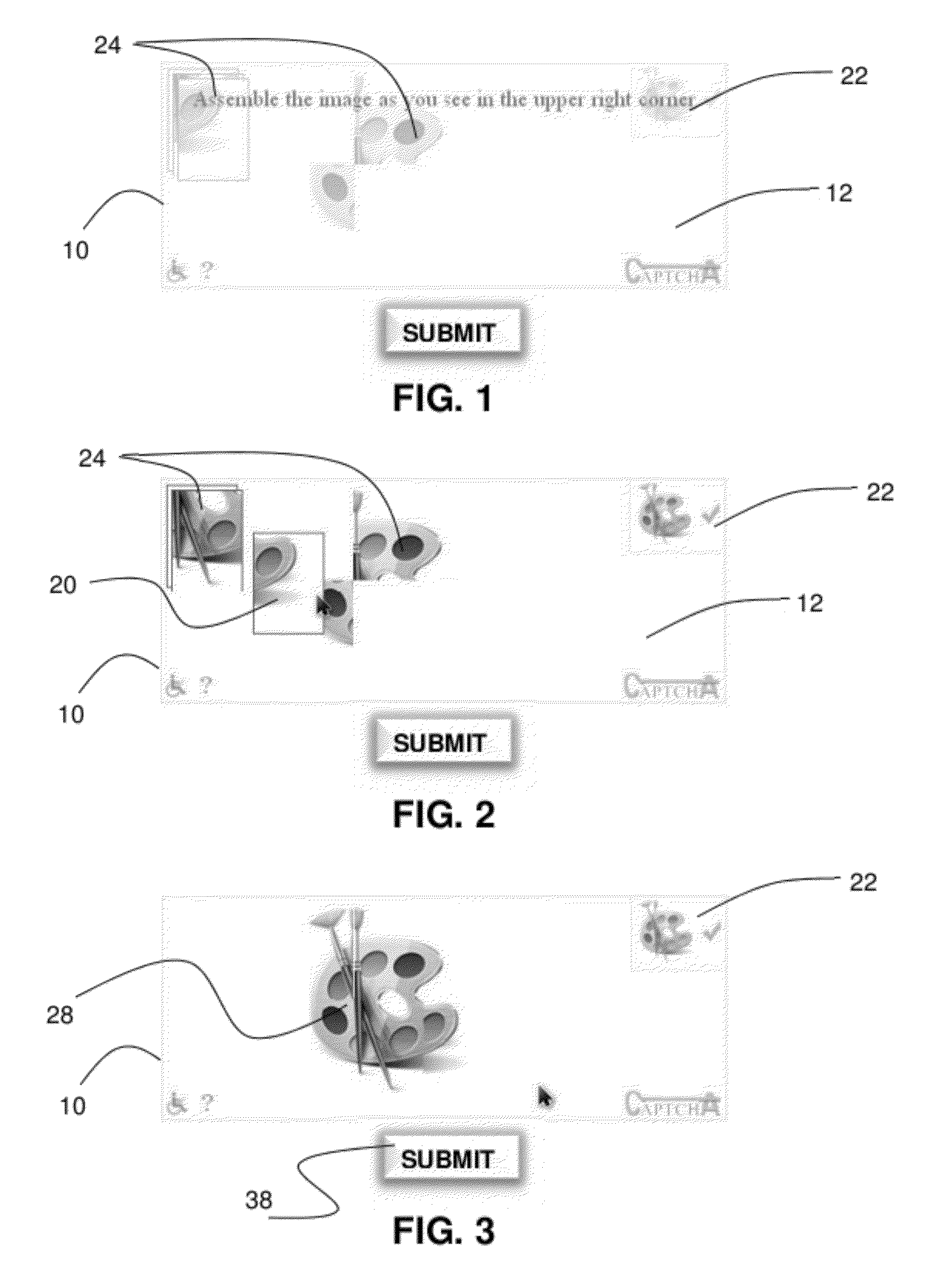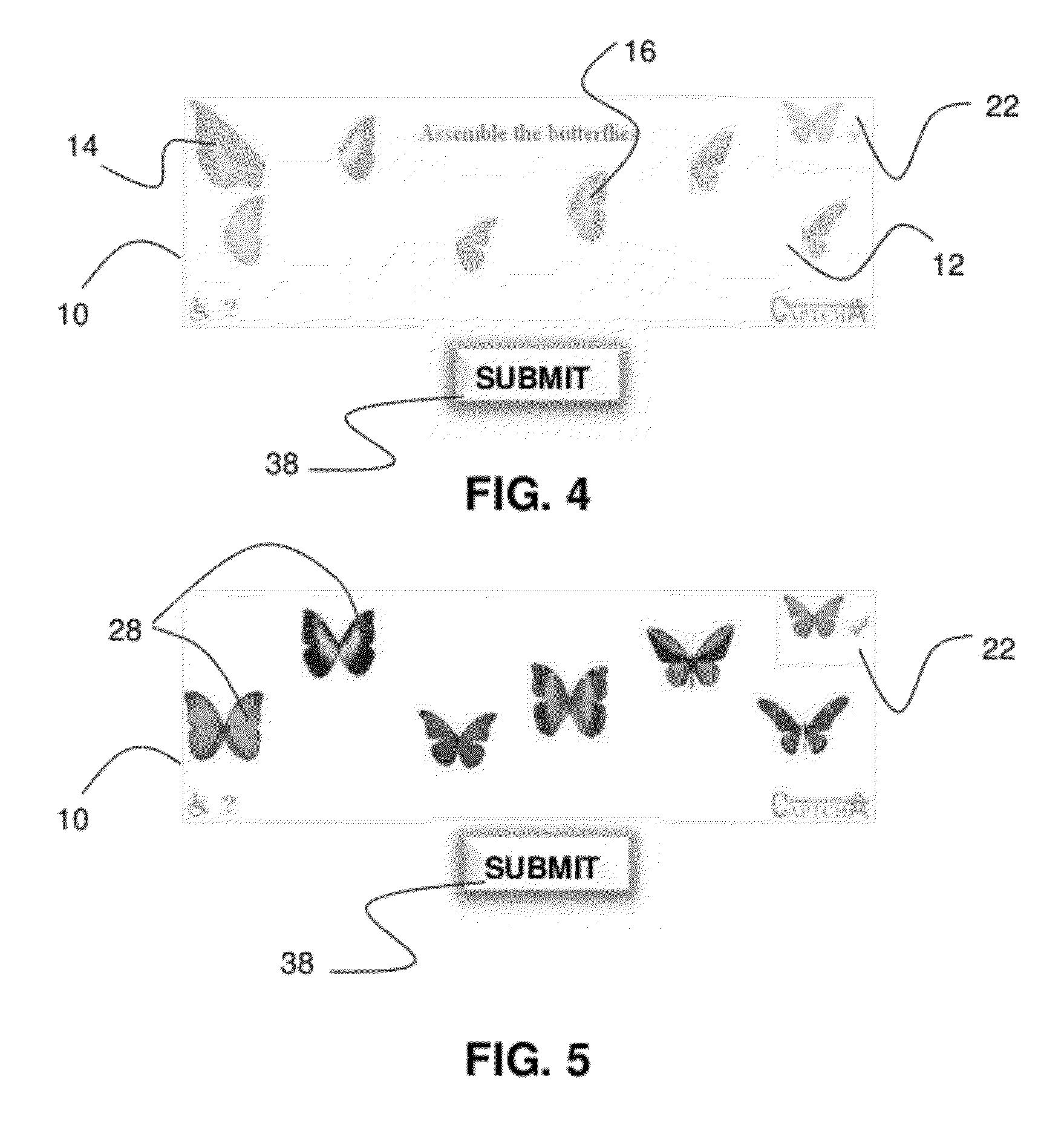Image-based captcha system
a captcha system and image technology, applied in the field of image-based captcha system, can solve the problems of increasing the difficulty of determining whether spam bots or humans are creating, the inability to identify real visitors, and the inability to automatically consume large amounts of website resources
- Summary
- Abstract
- Description
- Claims
- Application Information
AI Technical Summary
Benefits of technology
Problems solved by technology
Method used
Image
Examples
Embodiment Construction
[0032]FIG. 1 is an exemplary puzzle image as presented originally to a client;
[0033]FIG. 2 is the puzzle image from FIG. 1 being assembled by the client;
[0034]FIG. 3 is the completed puzzle image of FIGS. 1 and 2;
[0035]FIG. 4 is a graphical matching puzzle as presented originally to the client;
[0036]FIG. 5 is the completed puzzle from FIG. 4;
[0037]FIG. 6 is a second exemplary puzzle image as presented to the client;
[0038]FIG. 7 is the puzzle being partially completed of the puzzle in FIG. 6;
[0039]FIG. 8 is a completed puzzle from FIG. 6 before verification;
[0040]FIG. 9 is a puzzle of geometric shapes as presented originally to the client;
[0041]FIG. 10 is a completed puzzle from FIG. 9;
[0042]FIG. 11 is a color-matching puzzle as originally presented to the client;
[0043]FIG. 12 is a completed color-matching puzzle from FIG. 11;
[0044]FIG. 13 is a logo assembly puzzle as originally presented to the client;
[0045]FIG. 14 is a partially completed logo assembly puzzle from FIG. 13;
[0046]FIG...
PUM
 Login to View More
Login to View More Abstract
Description
Claims
Application Information
 Login to View More
Login to View More - R&D
- Intellectual Property
- Life Sciences
- Materials
- Tech Scout
- Unparalleled Data Quality
- Higher Quality Content
- 60% Fewer Hallucinations
Browse by: Latest US Patents, China's latest patents, Technical Efficacy Thesaurus, Application Domain, Technology Topic, Popular Technical Reports.
© 2025 PatSnap. All rights reserved.Legal|Privacy policy|Modern Slavery Act Transparency Statement|Sitemap|About US| Contact US: help@patsnap.com



